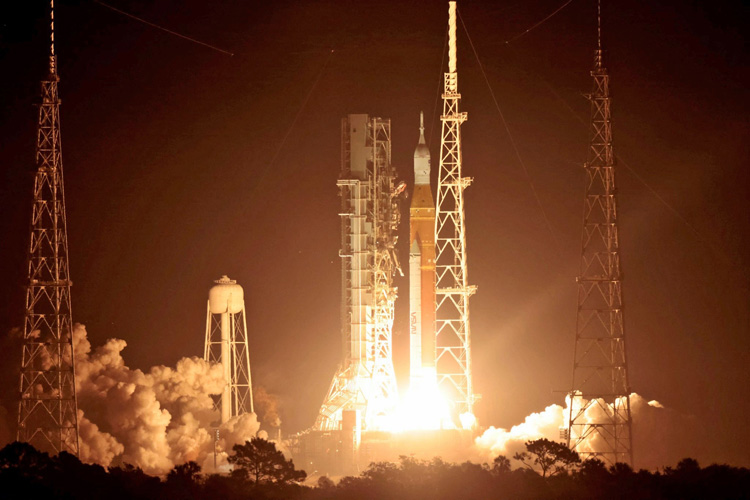INDIAN ARMED FORCES CHIEFS ON OUR RELENTLESS AND FOCUSED PUBLISHING EFFORTS

The insightful articles, inspiring narrations and analytical perspectives presented by the Editorial Team, establish an alluring connect with the reader. My compliments and best wishes to SP Guide Publications.

"Over the past 60 years, the growth of SP Guide Publications has mirrored the rising stature of Indian Navy. Its well-researched and informative magazines on Defence and Aerospace sector have served to shape an educated opinion of our military personnel, policy makers and the public alike. I wish SP's Publication team continued success, fair winds and following seas in all future endeavour!"

Since, its inception in 1964, SP Guide Publications has consistently demonstrated commitment to high-quality journalism in the aerospace and defence sectors, earning a well-deserved reputation as Asia's largest media house in this domain. I wish SP Guide Publications continued success in its pursuit of excellence.
- Prime Minister Modi Visits Punjab’s Adampur Air Base, Interacts with Airmen after Successful ‘Operation Sindoor’; Stern Message to Pakistan
- The layered Air Defence systems that worked superbly, the key element of Operation Sindoor
- Operation Sindoor | Day 2 DGMOs Briefing
- Operation Sindoor: India strikes back with Precision and Purpose
- Operation Sindoor: Resolute yet Restrained
- India’s Operation Sindoor Sends a Clear Message to Terror and the World – ‘ZERO TOLERANCE’
- Japan and India set forth a defence cooperation consultancy framework, talks on tank and jet engines
- Terrorist Attack in Pahalgam in Kashmir: Unfolding a long surgical war against PAK
- Lt General Pratik Sharma takes over Command of Indian Army's Northern Command
Lockheed Martin-Built Orion Spacecraft Launched to the Moon on Historic Artemis I Mission

With the backdrop of a Florida starlit sky, NASA's Artemis I mission, with the Lockheed Martin-built Orion spacecraft on top, majestically launched to the Moon and propelled the world into a new era of human deep space exploration.
This test flight is the first in a series of missions under NASA's Artemis program, which will result in the first woman and first person of color landing on the Moon.
Orion lifted off aboard NASA's Space Launch System (SLS) rocket at 1:47 a.m. ET today and two hours later the spacecraft separated from the rocket's upper stage traveling at 22,600 mph. This put it on a trajectory to break away from the gravity of the Earth and make its way to the Moon.
"We're witnessing history as Artemis I brings us one significant step closer to making NASA's vision for human deep space exploration a reality," said Robert Lightfoot, executive vice president of Lockheed Martin Space. "Through a nationwide industry team that has also leveraged an international industrial base, this launch and mission unite the skills of a dedicated workforce and innovative technologies to make a global impact."
With this successful launch, the planned 25.5-day mission has begun. It will initially take several days to reach the Moon and fly above its surface. Using the Moon's gravitational force, it will propel into a unique distant retrograde orbit that will take it about 40,000 miles beyond the backside of the Moon. Orion will orbit the Moon and collect data to allow mission controllers to assess the performance of the spacecraft and its payloads.
Preparing for Splashdown
Orion will fly close to the Moon and use a precisely timed engine firing in conjunction with the Moon's gravity to accelerate back toward Earth – traveling at 25,000 mph as it enters the planet's atmosphere. The spacecraft will splash down off the coast of San Diego, California.
"Most people today have not lived in a time when a human-rated deep space spacecraft has gone to the Moon or beyond," said Lisa Callahan, vice president and general manager of Commercial Civil Space at Lockheed Martin Space. "With today's launch, that statistic has changed and we're now all members of the Artemis Generation. Personally, I can't wait to see the first woman walk on the Moon and the spacecraft that will take her there is already in development."
Launching a Series of Industry-First Demos and Advancements
With a focus on leaning into commercial partnerships and building innovations that will prepare the industry for a future crewed mission, Lockheed Martin has several notables on board for the historic ride:
- Callisto: Lockheed Martin partnered with Amazon and Cisco to develop Callisto, a technology demonstration payload installed inside and interfacing with Orion during the Artemis I mission. Since Artemis I is uncrewed, Callisto was designed to test and demonstrate how commercial technology could be used to support future crewed missions in space. During the mission, controllers will operate the payload from the Johnson Space Center.
- LunIR CubeSat: One of 10 small satellites riding along with Artemis I, the Lockheed Martin-funded LunIR is a technology demonstration which will take images of the Moon to test the company's ultra-compact, novel infrared sensor that maps the Moon in both day and night. The team will apply learnings from this LunIR endeavor to future lunar and planetary scouting missions to support lower cost, applicable small satellites and technology demonstrations.
- AstroRad Vest: The Artemis I mission will also test AstroRad, a radiation-shielding vest developed by StemRad, a partnership between Lockheed Martin and the Israel Space Agency. The vest is made for space travel and is modeled after anti-radiation vests used by first responders on Earth. The MARE experiment put two torsos aboard the spacecraft – one wearing an AstroRad vest and one without to help determine exactly how much protection it will offer astronauts.
Join the Artemis and Orion journeys by downloading the Explore Orion app to your mobile device and following @LMSpace on Twitter.





